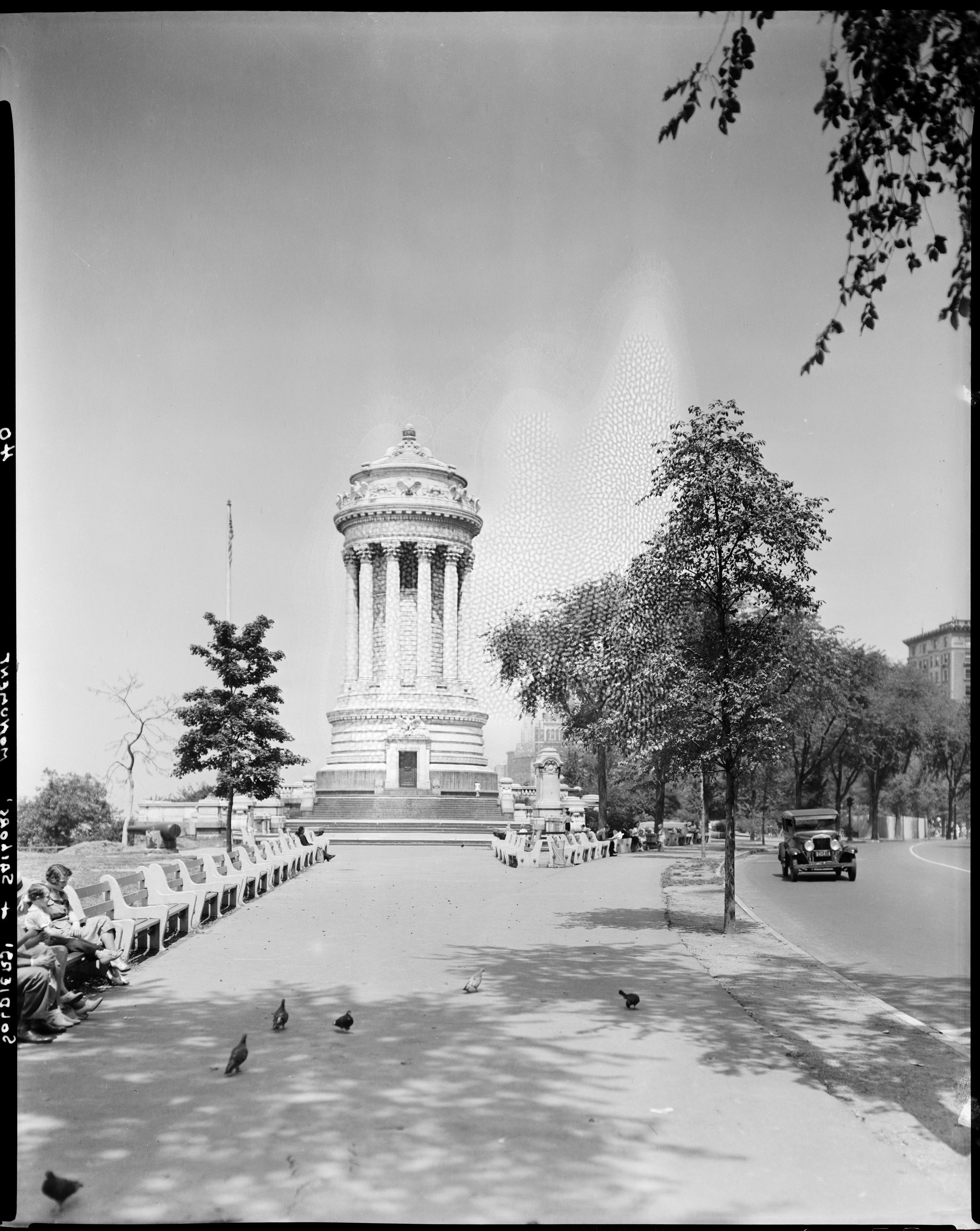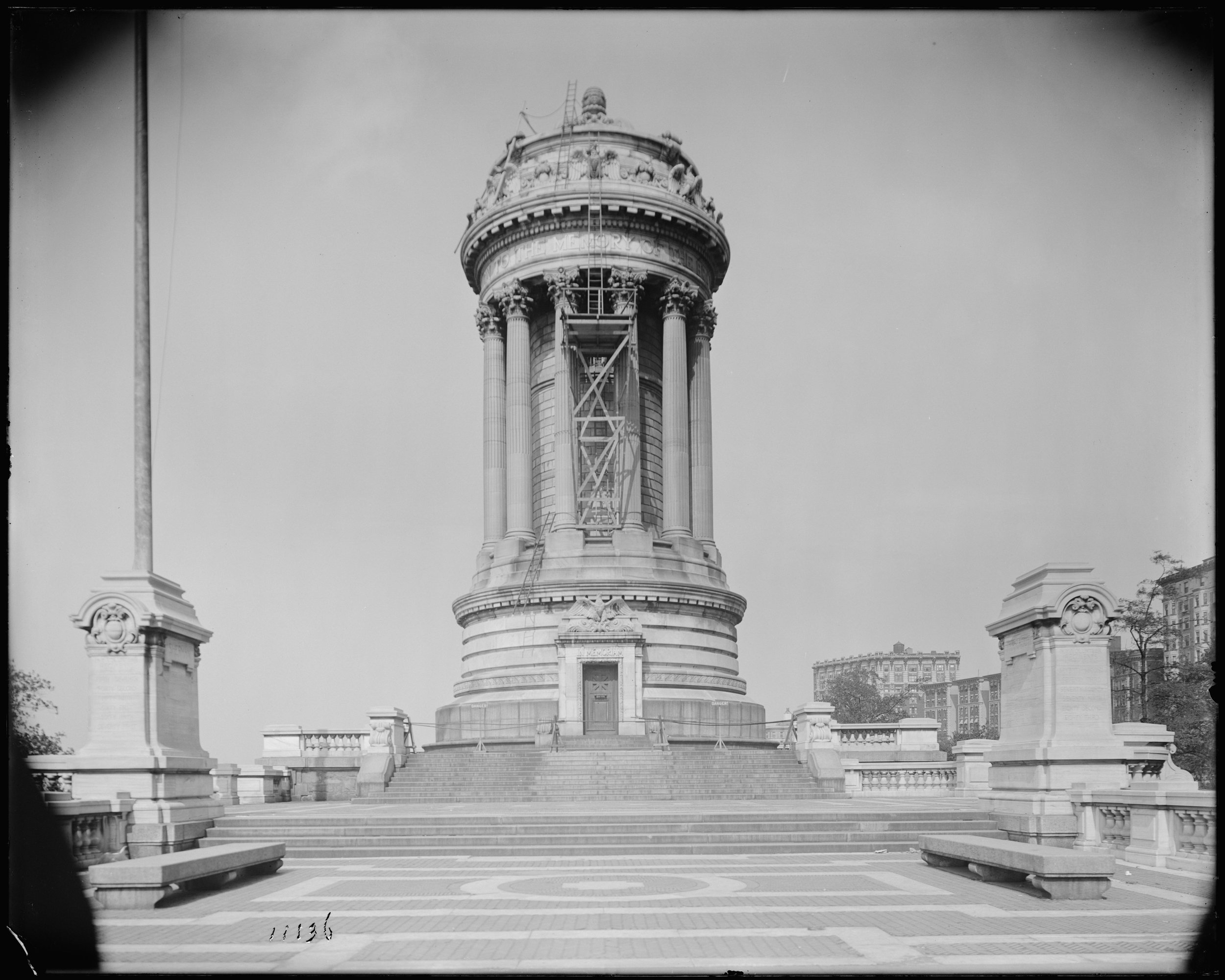Memorial Day, initially known as Decoration Day, originated with ceremonies in communities around the United States honoring soldiers who died in the Civil War. Several cities and towns lay claim to hosting observances between 1864 and 1867, but historians generally agree that the first widely-held commemoration took place in 1868.
Seventh Regiment Armory, illustration, Manual of the City of New York, 1864, D. T. Valentine. NYC Municipal Library.
On March 3, 1868, General John Logan, of the Grand Army of the Republic, an organization of former Union sailors and soldiers, issued General Order No. 11, which called for a national day of remembrance for Civil War dead. Logan directed that May 30 would be the day “set apart for the purpose of strewing with flowers or otherwise decorating the graves of comrades who died in defense of their country during the late rebellion, and whose bodies now lie in almost every city, village and hamlet church-yard in the land.” On May 31, 1868, the New York Times reported on commemoration ceremonies that took place the previous day at cemeteries in the region: “Our Dead Heroes. A Nation’s Tribute to their Memory—their Graves Strewn with Flowers.”
Letter, Emmons Clark, Colonel Commander of the 7th Regiment National Guard, to Mayor John T. Hoffman, May 18, 1868. Mayor John T. Hoffman collection, NYC Municipal Archives.
Searching for possible documentation of how and when New York City officials recognized or participated in Memorial/Decoration Day ceremonies led to sources in the Municipal Archives and Library collections. Stokes’ Iconography of Manhattan Island, available in hard-copy at the Municipal Library, is usually a good place to start researching events that took place during the 19th century. In this instance, however, the only entry in the index under Memorial or Decoration Day referenced the Times article from May 31, 1868.
The Municipal Archives’ mayoral records, often given credit for containing information about every possible topic—local, national and even international—proved more enlightening. It also provided an opportunity to demonstrate the usefulness of the word-searchable indexes created by Municipal Archives employees when working remotely in 2020.
Letter, M. H. Beaumont, Union Executive Committee, Grand Army of the Republic, to Mayor A. Oakey Hall, May 17, 1869. Mayor A. Oakey Hall collection, NYC Municipal Archives.
Typically, archival material is described at the folder level, but in the 1950s and 60s, archivists and librarians processing mayoral records recognized the exceptional intellectual content of the correspondence files and typed summary descriptions of each item. When working remotely during 2020, Municipal Archives employees began transcribing the typed summaries into searchable databases. For the Record articles, The Transcription Project, Early Mayors’ Collection and The Transcription Project, Early Mayors’ Collection II described the mayoral record transcription projects.
Searching information on the mayoral letters for the 1860s and 1870s revealed several letters that looked like they might be relevant to Memorial/Decoration Day. On May 18, 1868, Emmons Clark, “your friend and obedient servant” wrote to Mayor John T. Hoffman on stationary from the Office of the Metropolitan Board of Health. Clark extended to the Mayor an “official invitation to review the 7th Regiment on the 29th [of May].” He wrote: “The Regiment will parade on that occasion for the first time in its new full dress uniform.” Furthermore, “The Band will number one hundred performers.” And finally, he concluded, “I particularly desire that the City authorities should be first to see the Regiment in its new attire.”
Letter, Hans Powell, Corresponding Secretary, Memorial Committee, Grand Army of the Republic, to Mayor William H. Wickham, May 22, 1876. Mayor William H. Wickham collection. NYC Municipal Archives.
A second letter from Clark to the Mayor, also dated May 18, 1868, is written on stationary from the Headquarters of the 7th Regiment, National Guard, with Clark signing as “Colonel Commander” of the Regiment. This letter served as a formal invitation. It seems likely that both the Mayor and Commander Clark would have been aware of the “national holiday,” proclaimed for May 30, and perhaps the “review” scheduled for May 29, was intended as part of the holiday.
Correspondence the following year, in 1869, however, is more explicit in its reference to “Memorial Services.” On May 17, 1869, M. H. Beaumont, of the Union Executive Committee of the Grand Army of the Republic wrote to the new Mayor, A. Oakey Hall, inviting him “…to be present with us and participate in the Memorial Services on the 30th day of May.” Mayor Hall also received invitations from the Ninth Regiment Infantry, and 4th Brigade, 1st Division, of the National Guard, to review parades on the 27th and 29th of May.
The New York State Soldiers’ Depot, located at Nos. 50 and 52 Howard Street, and No. 16 Mercer Street, had been established by the State government as a temporary home for furloughed and discharged soldiers. View of the N.Y. State Soldiers’ Depot, illustration, Manual of the City of New York, 1864, D. T. Valentine. NYC Municipal Library.
Further research in the mayoral records revealed correspondence from 1876 that specifically references “Decoration Day.” Written to Mayor William H. Wickham by Hans Powell, Corresponding Secretary of the Memorial Committee, Grand Army of the Republic, and dated May 22, 1876, the letter “respectfully extends an invitation to you, and the Hon. Common Council to take part in the ninth annual parade for the purpose of decorating the soldiers and sailors graves upon Tuesday 30th Inst. (Decoration Day). This being the centennial it is proposed to make this parade a grand success.” Based on the designation of the event as the “ninth annual parade,” confirms that the first event would have taken place in 1868, the year originally designated by General Logan.
Secondary sources state that in 1873, New York was the first state to designate Memorial Day as a legal holiday. After World War I, it became an occasion for honoring those who died in all of America’s wars. In 1971, Congress passed the Uniform Monday Holiday Act and established Memorial Day was to be commemorated on the last Monday of May.
For the Record readers are encouraged to observe this Memorial Day, May 27, 2024, the 156th anniversary of the first commemoration.
Soldiers’ Depot, Receiving Room, 1st Floor, illustration, Manual of the City of New York, 1864, D. T. Valentine. NYC Municipal Library.
Soldiers’ Depot, Dining Room, 1st Floor, illustration, Manual of the City of New York, 1864, D. T. Valentine. NYC Municipal Library.









